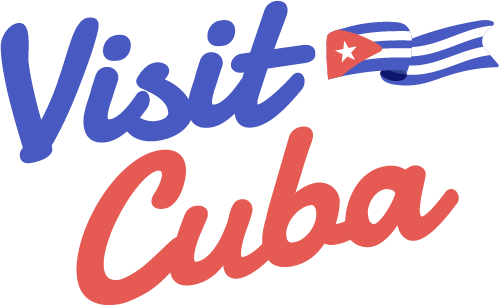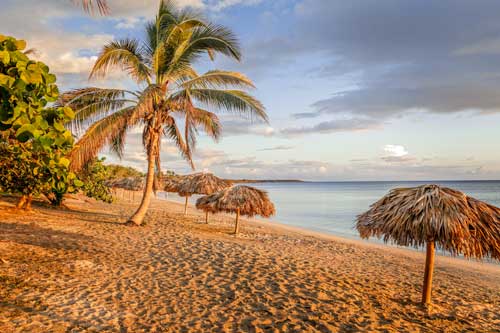Cuba up close
How to Travel Safe in Cuba
Tourist at the Malecón, Havana
Photo: Shutterstock
The best travel advice for a safe trip to paradise!
As you prepare to visit Cuba, you might ask yourself, “how safe is it to travel to Cuba?” What kind of steps should I take to ensure my wellbeing?” along with curious questions that usually pop up, especially if you plan on taking transportation in Cuba.
To help ease your concerns, we’ve simplified the process for you by creating this brief guide focusing on travelers’ top 5 safety concerns. Here goes!
Horseback riding in the Vinales Valley
Photo: Shutterstock
1. Hire a professional and experienced tour guide
The reality is, Cuban culture is notably different from any other nation in the western hemisphere, from its everyday social development to the sometimes painstaking process of resolving even the smallest issues, might not be what you’re used to. That’s why, to maximize the number of activities you can cram into your week’s vacation, using a seasoned guide to create an activity calendar to meet your needs is a smart move.
To start off the right way, consider contracting the services of a private tour guide company, compared to the state-run option - and there’s a reason why. Private tour guides have a better hands-on knowledge of Cuban geography, are more efficient at handling your requests, and ensure that your cash goes to local entrepreneurs.
Cuban pesos and dollars
Photo: Shutterstock
2. Paying and changing money in Cuba
On the island, electronic payments and transfers aren’t as widespread as one would like, and North American debit cards (for the moment) are restricted. Which is why we recommend that you purchase most of your train, bus, or national flights within Cuba ahead of time from home. Once in Cuba, the most reliable form of payment is cash.
A wise tip is not to exchange your currency all at once but rather change what you’ll need at the moment you need it. This is due to the extreme volatility of the Cuban Peso in the market, where you can increase or lose money based on the value of the Euro, U.S., and Canadian dollar - which can fluctuate dramatically.
Cuban ladies in Vieja, Havana
Photo: Shutterstock
3. Read up on the area that you’ll be visiting
Book your hotel stay like in any other country, but in Havana, some areas are more centric than others. In general, the “Barrios” with the highest recommendations are the Vedado and Playa sectors - which possess a variety of leisure-based businesses and are relatively safe and secure. These areas are also well connected to the other neighborhoods in the capital city - so getting around is pretty straightforward.
Another great option, for its large number of cultural and culinary activities, is the Old Havana area. However, keep in mind that although it’s a colorful and attractive municipality, it’s also less reliable in terms of security.
A Chevrolet classic car in Viñales Valley
Photo: Shutterstock
4. The safest transportation in Cuba
One essential aspect of your stay in Havana is the subject of transportation. So, if you plan on venturing outside the city to other provinces, like heading to the famous beach of Playa Varadero, the best choice would be to purchase a bus ticket from a state provider.
You can easily access these tickets in any tourism office within capital hotels. However, if you plan to stay within the city areas, paying for private transport will be convenient, as you can use transport apps in Cuba, like La Nave, which is similar to calling an Uber to take you around.
Tourists walking by Bodeguita del Medio, Havana
Photo: Shutterstock
5. Avoid the Tourist Trap
As Havana is a city with great international attractions, it’s not rare to find several tourist traps or scams to avoid. For example, refrain from purchasing hand-made goods on the busy main avenues because their prices are mostly well above the standard cost. Likewise, don’t take the word of a stranger on the streets when it comes to dining - the quality is usually low, and you’ll risk getting sick.
Likewise, try to avoid establishments where the menu price is either non-existent or difficult to read. This is a well-known restaurant tactic to charge you more for a meal compared to local prices.
Written by Gabriela Rey.
Published October 2022.
Looking for Some Cool Things to Do?
Dance to Your Own Beat at Havana World Music 2022
Havana World Music: Are you ready to break beyond the
Explore Cienfuegos With Our Handpicked Activities Just for You
Discover top activities and things to do in Cienfuegos (according
Greatest Waterfalls in Cuba
Let the crystalline waters of the greatest waterfalls in Cuba
Find Hidden Oases in Havana’s Parks & Gardens We Love
Explore the lesser-known parks and gardens of Havana and dive
Visit the Museo de la Revolución, and Relive the Fight for Cuba
Havana’s Museo de la Revolución offers a thorough look at
The Landscape of Cuba: Topes de Collantes
Enter and Explore Topes de Collantes. Home to amazing waterfalls
Sip and Dance Your Way Through Trinidad’s Nightlife
Things To Do Sip and Dance Your Way Through Trinidad's
Marabana – Havana’s Annual Marathon
The Marabana, Havana’s annual marathon, is a unique opportunity to
Cuba’s Top Destinations For Your Next Mountain Bike Adventure
Get to know the 5 best spots for mountain biking
Categories
Tags
Share
Subscribe to our newsletter
Get more travel inspiration, tips and exclusive offers sent straight to your inbox

 Subscribe to our newsletter for the best monthly stories and insider guides about Cuba!
Subscribe to our newsletter for the best monthly stories and insider guides about Cuba!